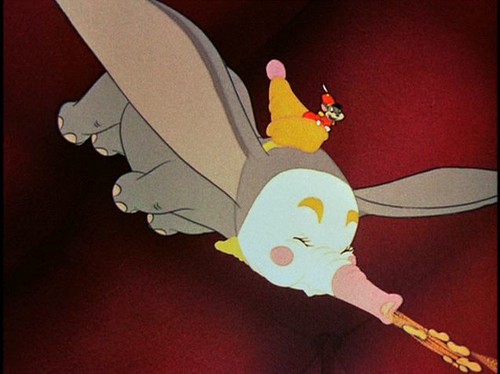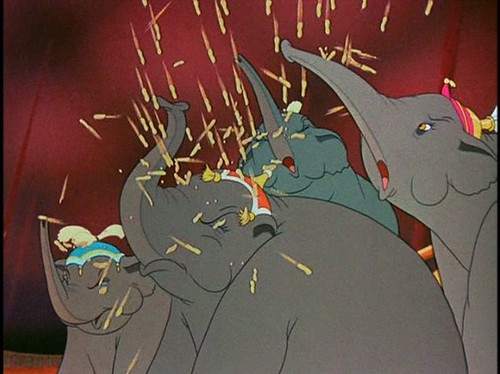I’m burning brain cells like mad trying to figure out Dumbo
. I got up at 4:30 this morning and sent a long email to my friend and colleague, Tim Perper. Here’s a lightly edited version of that email. It’s rough, tentative, crude, but it’s where I’m trying to go.
* * * * *
As you may know, I’m currently working on Disney’s Dumbo and, in consequence, have been thinking a lot about animals in cartoons. “Funny animals” were, and still are, all over the place, but why? On the one hand we know they’re humans in animal drag. But what’s the point of the drag? In particular, if they’re humans in drag, then why do we so often have regular humans playing roles in funny animal cartoons? Does the presence of all these animal humans represent a way of dealing with animality, or of humanity?
Questions, questions, questions!
Akira Lippit made a fruitful suggestion at the end of Electric Animal, where he suggested that animals appeared in cartoons at the time that they were disappearing from American life. People were moving from the farms to the city (and then the suburbs) and machines were more and more taking over work formerly done by animals (this, of course, was well under way in the 19th century). He also noted that Descartes thought of animals as automatons. Thus, animals as machines.
All that’s in play. I’m currently reading Paul Wells, Animation and America, and he makes consonant observations. Funny animal cartoons are a vehicle for thinking about what it means to be human, and the use of the animal vehicle also implies an attempt to think through animality as well. These funny animals aren’t merely humans in costume, they’re humans under scrutiny and the costumes are metaphysical in nature.
Bambi and Beyond
And Disney’s a funky and complex case. Dumbo was his fourth animated feature. It was followed by Bambi, his last until the late 1940s—the war killed his feature film business. Bambi is gorgeously drawn and animated, but I find it to be a yawner of a story. Bambi’s born, mommy gets shot, Bambi survives. Big deal. But it also represents a real attempt by Disney to deal with animals almost more or less sorta’ as animals. For example, they brought a fawn onto the studio lot and observed it so they could get it right. They also, ahem, realized that a realistically drawn fawn would not be cute enough.
Where Bambi leads, I think, is to Disney’s nature films, which began in the late 1940s. It does seem that Disney’s the one who’s most responsible for creating nature films as a genre. Now he faked those films in various ways—reusing shots, editing shots of different animals as though they were the same animal, and imposing human family values on animal lives—but he did photograph real animals in natural settings. And the public loved it, which was a good thing for the studio, for Disney always seemed to be running it on the edge of insolvency. The films were relatively cheap to produce (yeah, it costs money to hang out in the jungle with movie cameras, but not as much as an army of animators and inkers or expensive movie stars) and brought in bucks, well over production and marketing costs.
And, in the larger picture, others have done on to do a better job of documenting animal life than Disney did back in the day.
Dumbo, Animals in Clothes, and Humans
But this is a digression. Back to cartoons, and to Dumbo. The central figures in this film are animals, elephants, crows, a mouse, and a stork. Those aren’t the only animals, but they’re the central ones. And you know what? They wear clothes! The other animals don’t.

